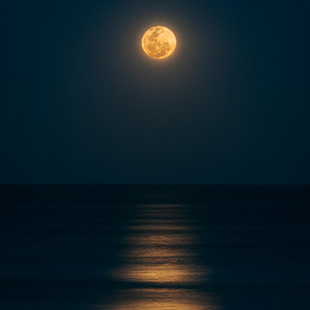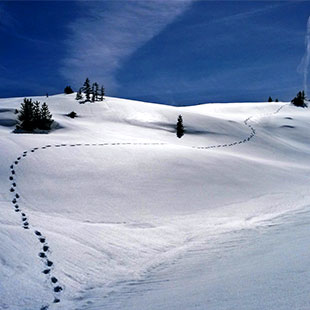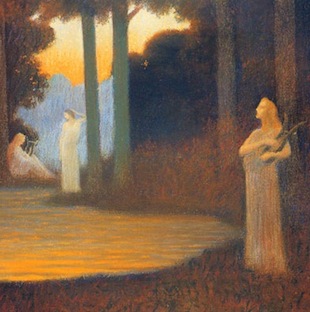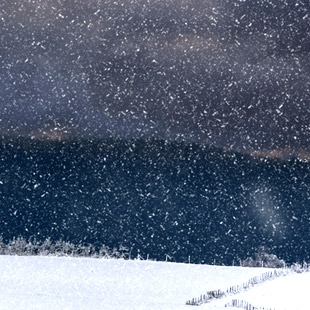Claude Debussy: 10 Essential Piano Pieces
Debussy's dreamy compositions remind us of the moving power of music. Discover a new song to learn with our list of 10 of his best pieces.
Published on 10 Jan. 2024
Musicians and writers tend to highlight the rich, evocative sound of the French composer Claude Debussy's compositions when discussing his influential catalog. Once you start learning his music on piano, you'll quickly understand why. Whether you're a seasoned pianist or just starting out, Debussy's delicate, dreamlike style has the uncanny ability to reach deep inside your soul.
Debussy was destined for a career in music by the time he was 9 years old, quickly identified as a gifted pianist. Growing up in a poor suburb of Paris, he caught the attention of a Russian millionaire, Nadezhda Filaretovna von Meck, who hired him to play duets with her children.
In the decades that followed, Debussy composed what would go on to become some of the most recognizable compositions of all time. These include the famous "Clair de Lune," an absolute must for piano players of all levels, along with classics like "Deux Arabesques," "The Snow Is Dancing," and "Serenade for the Doll"—all of which are available to learn through flowkey.
Below you'll find 10 of our favorite Debussy pieces. Regardless of your level, we encourage every pianist to dive in and experience the touching sound of this beloved composer.
1. Clair de Lune
A film-score favorite renowned for its emotive depth and evocative beauty
You've almost certainly heard this song before, so why not try playing it yourself? Composed between 1890 and 1905, "Clair de Lune" is a key example of Debussy's Impressionistic style, blending expressive melodies with rich harmonies. It's since been used to boost the emotion of key scenes in countless blockbuster films—most recently to beautiful effect in Everything Everywhere All at Once.
The song's title, meaning "light of the moon," perfectly captures its ethereal, melancholic atmosphere. Available on flowkey in 4 difficulty levels, "Clair de Lune" has been a gateway into the world of piano music for millions of people around the world. While its intricate passages can be challenging, learning this piece is an opportunity to convey profound emotion through music.
2. Arabesque No. 1 – Deux Arabesques
A balance between structure and expression
The first section of Debussy's "Deux Arabesques" stands out in a catalog full of timeless gems. Finished in 1888, it exemplifies Debussy's early Impressionistic style, blending classical form with flair inspired by Arab architecture.
Though it sounds dreamy and gentle, the version on flowkey is best attempted by experienced pianists. An ethereal opening leads to a cascading finale, inviting players to explore the delicate balance between structure and expressive freedom.
3. Des pas sur la neige
The soundtrack to a deserted winter landscape
"Des pas sur la neige," or "Footprints in the Snow," captures the tranquility of a deserted winter landscape. The slow, deliberate pace evokes the image its title suggests, creating a poignant and introspective atmosphere. There might also be a touch of melancholy in its pillowy chords.
Read: Learning Piano If You Already Play An Instrument
In the charming arrangement of "Des pas sur la neige" on flowkey, don't be intimidated by the "Advanced" label. Because of the slower pace, this is one of the list's easier songs to learn. Debussy suggested playing this one "intimately,” which you'll understand once you start playing it yourself.
4. La fille aux cheveux de lin
Inspired by romance
By now, you've likely realized that Debussy took inspiration from the outside world when composing. "La fille aux cheveux de lin" is a poem written by Leconte de Lisle in 1852 about a golden-haired woman whose beauty sparkles in the summer sun. Debussy sought to capture the essence of this poem in his piano composition of the same name, which explains the piece's bright, positive sound.
There's a certain elegance to this piece that emphasizes the mood and atmosphere. Despite its peaceful pace, "La fille aux cheveux de lin" pulls anyone who plays it into the moment, calling for careful attention to chord and pedal work, in particular. The payoff is well worth it, though.
5. Reflets dans l’eau
Intricate arpeggios and cascading melodies
Water isn't something we usually associate with piano music, but Debussy found a way to make the two things somehow fit together. In "Reflets dans l’eau" Debussy uses intricate arpeggios and cascading melodies to mimic the shimmering and ever-changing reflections on the water's surface.
"Reflets dans l’eau" demands a sensitive touch, as the intricate arpeggios and wide-ranging hand spans required can be technically challenging. But with time and practice, you'll be able to play it.
6. The Snow Is Dancing
A hypnotic, repetitive piece
Something about winter brought out the best in Debussy, a point "The Snow Is Dancing" hammers home. In this hypnotic, repetitive piece Debussy conveys the image of snowflakes dancing, using delicate and light textures to convey the lightness of falling snow.
"The Snow Is Dancing" is for experienced players. Due to its brisk tempo, we recommend practicing at a slow tempo to begin, paying close attention to accuracy and expression. This will help you establish a solid foundation and discover the nuances of this wonderful piece as you build up to full speed.
7. Et la lune descend sur le temple qui fut
Inspired by the Java music of Indonesia
This piece, like much of Debussy's work, is associated with the Impressionist movement, emphasizing atmosphere, color, and texture over traditional harmonic and melodic structures. The use of pentatonic scales, whole-tone scales, and parallel harmonies creates an otherworldly atmosphere.
Read: 5 Beethoven Piano Pieces for Players of All Levels
When composing the piece, Debussy looked to Java music, which he heard performed in Paris during the World's Fair of 1900. That explains the unique sound of "Et la lune descend sur le temple qui fut," which the version on flowkey captures perfectly.
8. La plus que lente
The sound of a 20th-century Parisian café
"La plus que lente," translated as "The Even Slower Waltz," is a charming waltz composed by Debussy in 1910. It's more upbeat than many of his pieces, and might evoke images of a 20th-century Parisian café—or dance floor. There's also a hint of jazz in its playful sound.
Piano learners shouldn't be fooled by the piece's leisurely pace and atmosphere. The note "molto rubato con morbidezza" at the piece's opening encourages a rhythmic freedom coupled with tender restraint that will appeal to more advanced players. If you're just starting out, try some simpler waltzes—perhaps our beginner or intermediate versions of "Waltz No. 19" or "Blue Danube"—before embarking on this adventurous piece.
9. Voiles – Prélude No. 2, L. 117
Evocative chords and delicate textures
It's easy to imagine "Voiles" as the soundtrack to some spy thriller. Debussy's mastery of harmony is captured in this piece, which employs rich, evocative chords and delicate textures to create a sense of introspection and nostalgia—and perhaps mystery?
There are plenty of opportunities to explore the effect of dynamics, layering, and pedaling as you play this piece—and to discover how your choices influence its overall mood. Approach this one with patience and sensitivity to the fine details for a wonderful payoff.
10. Serenade for the Doll
One of Debussy's funnest songs to play
From Johnny Cash to Bob Marley, children have inspired some of the best-loved songs of all time. "Serenade for the Doll" is Debussy's entry to that canon, dedicated to his daughter Chou-Chou. Composed in 1908, the piece remains a delightful gem, embodying the grace and wonder of childhood in its playful sound.
Pianists might find "Serenade for the Doll" one of the funnest songs to play on this list, especially the dazzling opening section. As with much of Debussy's catalog, slow, accurate practice is the key to nailing the dynamic, shifting moods of this moving piece.
Play the music you love with flowkey
Learning to play your favorite Claude Debussy pieces will help you achieve your goals—and make your piano-learning journey much more enjoyable. After all, when you're playing music you love, it's easier to stay motivated.
Do any of these Debussy songs have your fingers itching to hit the keys? Get the full tutorials and discover our entire library at flowkey, available on desktop and mobile.
Read next
How Long Does It Really Take to Learn the Piano?
Practicing the piano is something you can enjoy for a lifetime, but how long will it take until you can play your first song?
The 10 Best Piano Songs for Beginners to Learn
Are you just beginning to learn piano? Or picking back up the instrument after a long break? Finding the best piano songs to learn can be tricky when you’re still finding your way around the keys.
The 9 Mozart Pieces Every Piano Player Needs to Know
Mozart remains one of the best-known composers of all time, and with good reason. Here are 9 of his most well-loved pieces to learn on piano.
Baroque, Romantic, Contemporary: Famous Piano Composers Across the Eras
Take a trip through piano history, from the Baroque right up to the Contemporary period, and learn more about the composers that defined each era.










